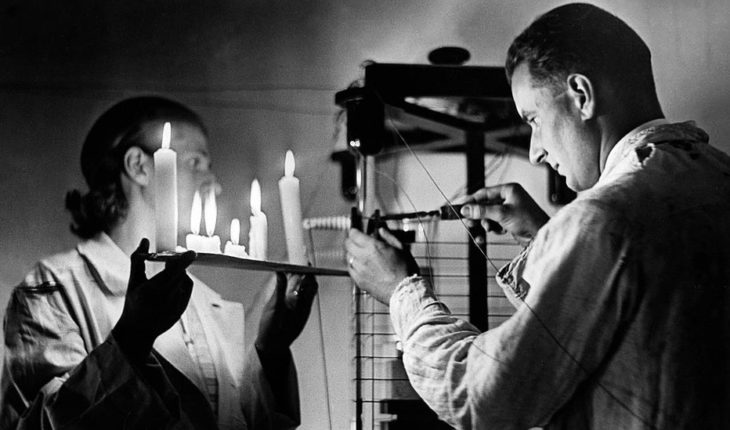already nothing will be the same.
From this November 16th, the International Committee of weights and measures agreed the new value kg, the unit of measure that has unified in a same expression decimal scales around the world for nearly 130 years.
Following the agreement of the representatives of 60 countries, from may of 2019, a kilogram not already weighed a kilo.
Or, at least, will weigh not the same as the universal prototype of kilogram, a small cylinder of Platinum which was kept as a faithful under three keys and several domes in a crypt in the outskirts of Paris.
From now on, its value will be determined by Planck’s constant, a value of the cryptic world of quantum physics which, among other things, links the energy of the photon (the elementary particle of that branch) with its frequency.
Beyond the complex explanation behind new value, this means that, from now on, kg will be defined in terms of constants that describe the natural world and its value will be related to “fundamental characteristics” of the universe which not is expected to change (at least in the earthly time scales).
But kg was not the only one who ceased to be what it was until now.
Three of the seven measures of the international system of units (SIU) also changed this Friday.
And although they are little known outside the laboratories, also they will have an impact in scientific research from next May.
The temperature when the International Bureau of weights and measures (BIPM, by its acronym in French) established the SIU, defined the kelvin as a unit of temperature.
Getty ImagesEl kelvin equals the degree Celsius, but its scale is much higher. Although in practical life we use Celsius or Fahrenheit, the kelvin is widely used in science, since it measures the point in which the molecules and atoms of a system have the minimum possible thermal energy.
Like other temperature scales, the freezing and boiling water points were key factors to establish the range of mediation: there are 100 degrees between the temperature at which water freezes to (273.16 K) and boiling (373.16 K).
From now on, the value of the kelvin will be established also by a physical constant: that of Boltzmann, that relates to absolute temperature and energy.
This, for which we are left with the College physics, means to be determined by measuring the average speed (and thus the thermal energy) of a set of molecules.
Electricity other changes approved Friday is equivalent to an electric shock for old physics books.
Indeed, the international unit for measuring the intensity of the electric current is already not the same.
Although its value, such as the of almost all units of measure, varied from one country to another, “international ampere” was defined in terms of the electric current generated by a solution of silver nitrate electrolytic deposition.
Getty ImagesDesde more than one century ago, the unit for measuring the intensity of the current has been a matter of scientific debate. Later, measured in a more complex and hypothetical way: as the current generated between two straight parallel conductors of infinite length placed one meter of distance in a vacuum.
From now on, amp will be defined by the elementary electric charge, the electron.
I.e., it will be equivalent to the energy contained in individual electrons passing through a point in a circuit.
The substance for many of us, the mol is just an old memory of College chemistry experiments.
However, the unit with which it measures the amount of substance is one of the seven fundamental physical quantities of the SIU and has a vital importance in scientific research.
For years, chemistry experts tried to determine the number of fundamental particles that could be in a sample.
Getty ImagesLos chemical used several values to determine the amount of substance of a sample. Made the first approach Joseph Loschmidt, who tried to quantify the number of molecules in a cubic centimeter of gaseous substances under normal conditions of temperature and pressure.
Chemicals in the 19th century used as a reference a method based on weight and decided to use patterns of mass containing the same number of atoms or molecules.
Later established that mol amounted to as many elementary particles like carbon atoms there are in 0.012 kg of carbon-12.
Finally, the Committee of weights and measures established that value that will define the amount of substance will be the Avogadro constant call.
This is equivalent to the number of constituent particles (usually atoms or molecules) that are in the amount of substance (understood as the number of particles).
Other changes not the first time that the SIU changes its international units to relate them to physical constants and overcome the limitations of perishable or changing elements of everyday life.
The subway, for example, whose universal measure was a Platinum rod, went on to be linked since the 1960’s the distance that light travels in a vacuum in 1/299.792.458 of a second.
Getty ImagesLa candela was initially measured by the intensity of the sails. In 1967, the own way of measuring time also changed, when he stopped to consider the rotation of the earth around its axis as the scale to determine the duration of the second.
Since then, the latter is defined by a cesium atomic clock that does not fall behind or ahead by an average of 1.4 million years.
The candela, a flash unit originally based on the brightness of the flame of a candle was redefined in 1979 based on the brightness of a source which emits light at a specific frequency in the green part of the spectrum, to which the human eye is located.
Years later, the speed of light through a vacuum would be the new stick with which this magnitude would be measured.
translated from Spanish: 3 units of measurement as well as the kilogram that will also change from 2019
November 17, 2018 |





